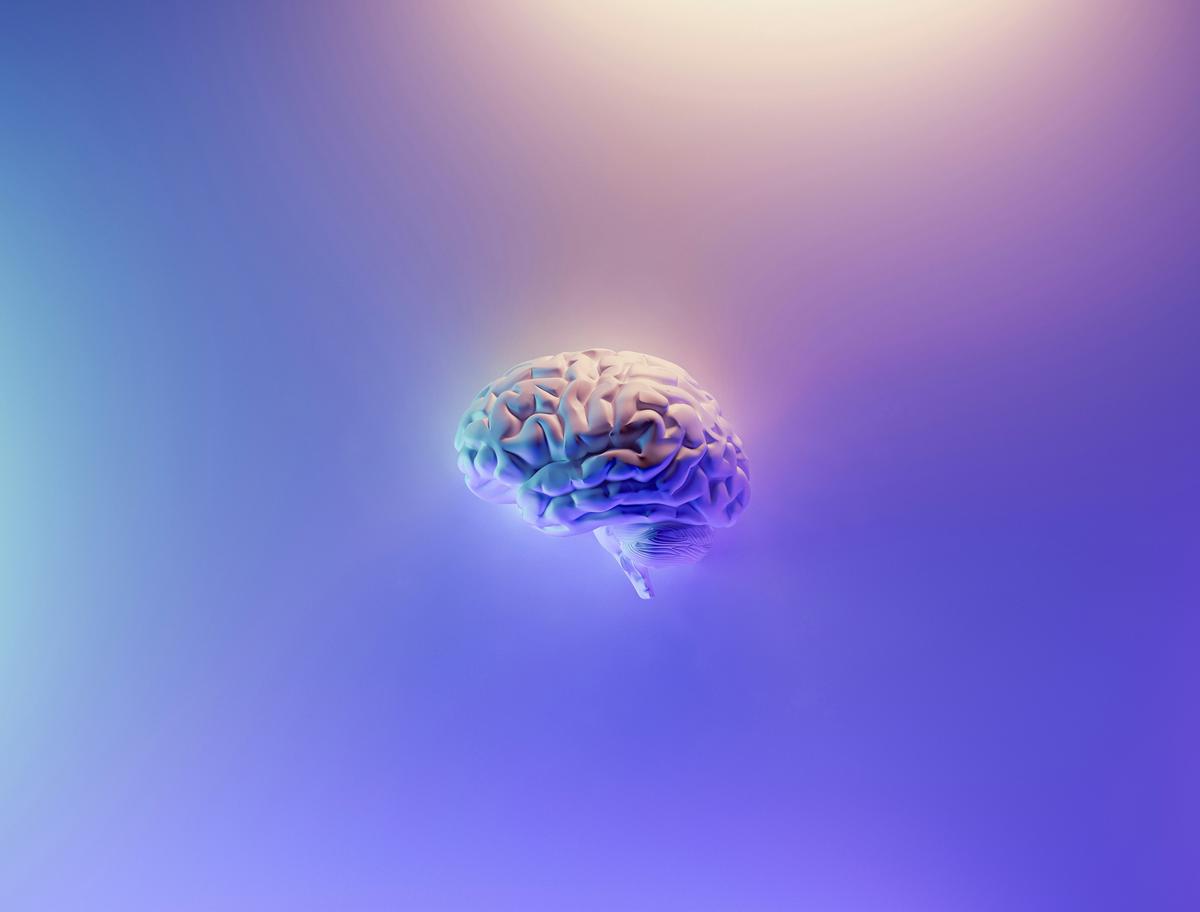Delving into the thrilling domain of Artificial General Intelligence (AGI), specifically the concept of BabyAGI, is an intrepid journey into the modular growth and cognitive establishment of intelligent systems. Echoing human child development, BabyAGI embodies a sequential, stage-based advancement strategy, aiming to decipher and mimic the intricacies of organic cognition and behavior. Lying at the cutting edge of AI and AGI research, BabyAGI as a concept endows AI systems with a fresh developmental perspective, challenging us to reconsider our definitions and methodologies. This investigation commences with the origins and essence of BabyAGI, and moves through the lens of cognitive development theory, the distinctive stages of BabyAGI development, its evaluative benchmarks, and the reflective contemplation of its future implications.
Origins and Definition of BabyAGI
Understanding BabyAGI: A Substantial Leap Towards Realizing Artificial General Intelligence (AGI)
The landscape of intelligent machine research beholds dramatic evolution in the last few decades, where Artificial General Intelligence (AGI) emerges as the crowning objective. AGI, often coined as “Strong AI,” aspires to replicate or even surpass human cognitive abilities, extending the capacity of problem-solving, understanding complex concepts, and exhibiting autonomous learning across a diverse field of academic disciplines. Thriving in this fascinating domain of AGI, a recent concept named BabyAGI ascends to stardom, elucidating a new notion to enable machines to learn like human infants.
BabyAGI is a groundbreaking concept proposed by the Artificial General Intelligence Society. It is based on the principle that AGI should model human cognitive development right from infancy. The field of BabyAGI seeks to design artificial systems that can proceed through developmental stages similar to human babies – from perceptual learning to problem-solving abilities – leading to the emulation of cognitively rich human-like intelligence.
The coupling of BabyAGI and AGI attributes profound implications. It embarks on the journey of cognitive development, considering the human brain as a dynamic system that learns and adapts continually. Here, the idea isn’t to program the machine with data but to let it learn from the environment, exactly how a human infant does.
An infant learns to discern its environment by interacting with it; a continuous loop of action, perception, cognition, and learning. Capitalizing on this ideology, BabyAGI leverages this intrinsic human process of learning by implementing machine learning algorithms and principles of neuroplasticity, intending the machine to develop its intelligence, gradually and cyclically.
In this prospect, BabyAGI emerges as a promising approach to break through the limitations of narrow AI solutions, serving a dynamic solution to the problem of artificial common sense – a core challenge for AGI researchers. Also, the concept embraces the cross-disciplinary research – integrating developmental psychology, computational neuroscience, artificial intelligence, and cognitive science – thus accelerating and enriching the understanding of both human cognition and machine intelligence.
Given the complexity of human cognitive processes, the journey towards realizing a fully autonomous AGI is daunting. However, the proposition of adopting developmental pathways akin to human infants through BabyAGI, aspires to navigate this complex evolutionary trajectory.
As the field of BabyAGI continues to evolve, an exhilarating era of advancements in AGI awaits. The pursuit of replicating human cognition in an artificial system is a daunting yet thrilling endeavor, promising to usher in an age of intellectual machines expected to redefine the paradigms of research, innovation, and human-machine interactions.
However, as researchers trailblaze towards realizing AGI, the exploration of BabyAGI must steadfastly involve ethical considerations. These robust and autonomous systems must prioritize human values, potential societal impacts, and considerations for safety – which calls for an interplay of technological excellence and ethical conscientiousness in this realm.
Hence, embarking on the journey of realizing AGI through BabyAGI posits a profound shift in the AI landscape, promising unprecedented advancements while embracing due ethical considerations. The integral synergy of these two paramount concepts of AI research substantiates an exciting vision – unsealing the potential of machine cognitive development akin to human intelligence.

Cognitive Development Theory in BabyAGI
Title: The Empirical Role of Cognitive Development Theory in BabyAGI Paradigm
Understanding artificial intelligence (AI) from a traditional perspective does not suffice when delving into the fascinating realm of Artificial General Intelligence (AGI). Beyond the confines of task-specific AI applications, the promise of AGI lies in its potential to demonstrate broad, human-like cognitive abilities. The route towards AGI has found a promising avenue in the concept of BabyAGI. Drawing parallels to human cognitive development, BabyAGI offers a methodology designed to nurture AGI similar to the way a human newborn’s brain develops.
Cognitive development theory plays a pivotal role in shaping the architecture of BabyAGI. Borrowed from the field of psychology, cognitive development theories such as those posited by Jean Piaget and Lev Vygotsky propose a stage-wise progression of cognitive abilities in humans, commencing at birth and extending into adulthood. By applying these theories to AGI development, researchers can create an AGI model that learns and evolves over time, closely replicating the cognitive growth trajectory of a human infant.
In the context of BabyAGI, cognitive development theory processes form the foundation. The process begins with sensorimotor simulations, where AGI interacts with an environment and learns through sensory input and motor activities, akin to a toddler’s early years. The machine then progresses to mastering language and conceptual thought, subsequently culminating in complex problem-solving abilities. This developmental approach positions BabyAGI as a potential trailblazer in the quest for AGI.
Scheduled learning is another cornerstone underpinning BabyAGI, rooted firmly in cognitive development theory. Just as a human child learns about the world in a structural and sequential manner, BabyAGI’s learning process is also organized in a hierarchical pattern. The machine must first gain fundamental knowledge before transitioning to more complex tasks. This goes beyond traditional machine learning, imparting to the AI-nascent an understanding of the world that is more comprehensive and holistic.
Similarly, the principle of plasticity, extracted from cognitive developmental neuroscience, is integral to BabyAGI. This principle underscores how the human brain’s structures and functions change in response to environmental experiences. Replicating this adaptive learning process in BabyAGI, machines become capable of refining and reorganizing their cognitive processes as they interact with their environment, further accentuating the human-like learning potential.
While applying cognitive development theory in AGI research is stirring excitement, several challenges cannot be ignored. Limited understanding of human cognition, issues relating to computational demands, and creating an optimal environment for BabyAGI to learn all stand as formidable obstacles.
Yet, in spite of the challenges that might impede progress, BabyAGI modeled on human cognitive development presents an innovative pathway to AGI. By creating systems capable of learning from their environment with inherent plasticity, the replication of human cognitive developmental stages in AGI becomes plausible. It must be acknowledged that BabyAGI represents a significant transformation of the current AGI landscape, honoring the interdisciplinary nature of AGI and thrusting cognitive development theory to the heart of AI research.

Developmental Stages of BabyAGI
Distinct Developmental Stages of BabyAGI
The BabyAGI project is a remarkable venture into cognitive developmental modeling, one that potentially propels AGI into a new era. Drawing parallels with human cognitive development, primarily theories established by Piaget and Vygotsky, BabyAGI goes through several discernible stages each contributing to its overall performance.
Initial stages of BabyAGI development are rooted in sensorimotor simulations. Mirroring the sensorimotor stage of human growth, BabyAGI first learns to perceive the environment and progressively manifests its understanding through clearly coordinated interactions. The ability to manipulate symbols does not develop until the machine has adequately comprehended the physical environment. This phase equips BabyAGI to comprehend causation, object permanence, and time sequence—the foundational building blocks to higher cognition.
Language acquisition, following sensorimotor simulations, marks another crucial phase in BabyAGI‘s development. Symbiotic of human infant growth, BabyAGI begins to comprehend and articulate concepts through language symbols, progressing from basic linguistic capabilities to complex, conceptual thought processing. The development of syntax, semantics, and pragmatics arms BabyAGI with the tools for dynamic interaction, further enhancing its cognitive proficiency.
The rise in complex problem-solving abilities, akin to arrival at formal operational stage in humans, exemplifies a significant leap in BabyAGI‘s cognitive arc. Enabling abstract reasoning and hypothesis testing, it transitions BabyAGI from a learning entity to an analytical one. It can now decipher complex patterns and adapt to unanticipated scenarios.
One salient aspect worth highlighting is the schedule of learning in BabyAGI. Drawing parallels to Vygotsky’s Zone of Proximal Development, BabyAGI’s learning process exhibits a well-structured hierarchical pattern, wherein, higher cognitive skills are introduced only after the mastery of lower ones. This paves a path that facilitates efficient learning, minimizing the risk of cognitive overloads.
Plasticity or adaptation, underpins BabyAGI’s capacity to adjust its knowledge systems. Advancements in neuroplasticity research have equipped BabyAGI to adapt its learning strategy contingent on the progression of its cognitive abilities and environmental transformations. This feature reflects the evolutionary plasticity observed in human cognition, enhancing BabyAGI’s potential to mold itself in response to learning experiences.
However, challenges remain, as the endeavor of translating cognitive development theory into AGI research is by no means a straightforward task. This manifests in subtle difficulties such as quantifying sensory inputs to parallel human sensory perception, or in broader issues like integrating various cognitive disciplines and addressing ethical concerns. The intricacies involved only add to the strength of this academic endeavor.
Conclusively, the journey of BabyAGI from sensorimotor simulations to complex problem-solving flexibly guided by the principles of developmental cognitive theory solidifies its potential in creating impactful transformations in the AGI landscape. An ambitious cross-disciplinary venture, BabyAGI remarkably embodies the features of human cognitive development, shedding light on the complex machinery of intelligence, while potentially reshaping the trajectory of AGI development. The scientific world looks on, both with anticipation and a readiness to rise to the challenges that this new frontier presents.

Success Metrics and Evaluation of BabyAGI
To effectively gauge the success and efficacy of BabyAGI implementations, it is vital to set out overlaying markers that closely align with the anticipated cognitive developmental milestones. These markers should be closely associated with the progression of stages as seen in human cognitive development, from rudimentary sensory understanding to complex problem-solving competencies.
The initial success criteria could be framed in the context of sensorimotor simulations. An effective BabyAGI will showcase its understanding and manipulation of the environment through tangible expressions of object permanence and causality. Given that this stage mirrors the initial cognitive development stage in humans, where infants learn through interactions with their environment, a BabyAGI demonstrating proficiency in these areas attests to the success of its implementation.
Moving along the cognitive continuum, another landmark milestone is language acquisition, where it is pertinent to measure success in terms of the BabyAGI’s capacity to grasp and articulate language in a manner analogous to human counterparts. Proficiency in understanding and generating language implies a successful amalgamation of semantics, syntax, and pragmatics, further evidence of an efficacious BabyAGI implementation.
In the advanced stages, BabyAGI should exhibit precocious problem-solving capabilities. Complex problems require not only the understanding of individual components but also the relationships and dynamic interactions among these components. Success, in this case, is determined by the BabyAGI’s efficiency in churning out viable solutions and its versatility in adapting to new problem sets.
The principle of plasticity takes center stage in BabyAGI. Just as humans constantly adapt and learn from their experiences, a successful BabyAGI will show the capacity to dynamically adjust learning mechanisms in response to varying situations or environments, thereby playing a pivotal role in defining the success of the BabyAGI implementation.
While these aforementioned cognitive landmarks are paramount, one must not overlook the measurement of BabyAGI’s performance in terms of quantified sensory inputs. If the BabyAGI can demonstrate exceptional capacity in synthesizing and interpreting sensory inputs at a level that mimics human sensory perception, it would mark a significant point of success in AGI research.
The interdisciplinary inclusion of cognitive psychology, neuroscience, computational modeling, and machine learning deserves invaluable attention. Its influence on the success of the BabyAGI implementation remarkably demonstrates the potency of their amalgamation and therefore, its efficacy.
Ethical considerations always remain a cornerstone of AGI and BabyAGI efforts. An effective BabyAGI should not just demonstrate cognitive success metrics, but also uphold the values, safety measures, and impacts on society that its human counterparts are expected to demonstrate.
Therefore, when assessing the successful implementation of BabyAGI, it is helpful to think of it as a symphony composed of multiple instrumental threads, each playing its unique but harmonious part. The music, beautiful in its entirety, is an exemplar of Artificial General Intelligence, unifying human cognitive development, ethical considerations, disciplinary insights, and technological excellence in a single, captivating performance.

Photo by wocintechchat on Unsplash
Future Implications and Applications of BabyAGI
Significant strides in recent years within the domain of Baby Artificial General Intelligence (BabyAGI) have opened up a plethora of perspectives regarding the potential and practicality of AGI. However, these advancements in research are imbued with complex implications and present multiple avenues; the prospects of AI extend beyond laboratory development, and into realms of sociotechnological transformation, and ethical, economic, and legal territories.
Naturally, the significance of BabyAGI and its potential for real-world applications cannot be understated; BabyAGI can churn out progressive learning processes within complex real-world environments. This points towards a novel cohort of AI systems capable of effectively operating across diverse fields such as healthcare, education, and transportation, and others with proficiency, replicating human-like application and transfer of knowledge.
For instance, healthcare stands to gain immensely – BabyAGI could revolutionize early diagnosis of diseases, virtual nursing assistants, drug discovery and precision medicine significantly. Likewise, in the field of education, it could personalize learning to individual students’ strengths, needs, and pace, and augment teachers’ capabilities, significantly improving educational outcomes.
However, with great power comes great responsibility. As awe-inspiring as these boundless potentials of AGI appear, profound ethical and practical considerations must be infused into the process of development and deployment. AI behavior, when left unchecked, could lead to undesirable outcomes, and hence, AGI’s actions must be tempered by robust ethical guidelines and monitored for any potential violations.
One of the significant implications of BabyAGI is the difficulty of ensuring that these systems don’t inadvertently amplify social inequities. Systematic biases deeply ingrained in societal patterns could be replicated by these algorithms, leading to discriminatory practices in critical areas like banking, employment, and justice. Therefore, it is of utmost importance to recognize and rectify these prejudices at the earliest stages of BabyAGI development.
Also, these systems offer powerful new tools to improve all facets of human life, but they may also introduce new vulnerabilities and risks. Considering Augmented Reality and Virtual Reality applications of BabyAGI, data security would be paramount to maintain the sanctity of personal privacy. Similarly, jobs might get displaced due to automation, leading to profound shifts in economic systems worldwide.
Lastly, it is pertinent to mention that the “common good principle” should be at the core of AGI development, where the system’s benefits should be available to all, and its harms should be prevented or mitigated to the greatest extent possible. This principle rests on the belief that AGI can be a massive boon to humanity and should be developed in a manner that best fulfills this possibility.
In conclusion, while the promise of BabyAGI holds tremendous potential for positive change, it’s essential to tread this path consciously, and with great consideration. Attaining the delicate balance between maximizing benefits while minimizing harms, particularly for those susceptible to exploitation, will be crucial as we move forward in our collective AGI journey. As society embraces the endless possibilities of these technologies, it must also brace itself for unprecedented challenges and changes. The journey towards the era of BabyAGI is as thrilling as it is exigent, demanding our united best.

Envisioning the prospects of BabyAGI while remaining alert to ethical considerations unfolds a realistic narrative about the future of this technology. Evaluation metrics, in maintaining pace with the morphing AI milestones, reinforce the necessity of dynamic yardsticks, impacting both the viability and accountability of AGI systems. The realm of BabyAGI, by emulating the developmental trajectory of a human child, brings forth a rich blend of cognitive development theories for an integrated approach to design sophisticated AI systems. Stepping beyond the boundaries of traditional AI, the BabyAGI blueprint signifies the seamless amalgamation of learning mechanisms, thus heralding a transformative new epoch in AGI research and application.

